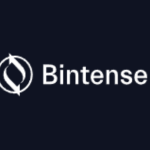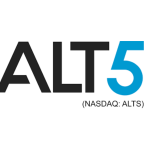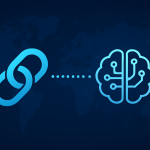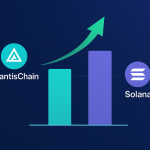AI
Ethereum Traders Bet Big On AI Crypto: The Beginning Of A New Era

Introduction
The intersection of artificial intelligence and blockchain has long been an area of interest for developers and investors alike. Over the past few months, this fusion has moved from theoretical to actionable, as new projects emerge aiming to transform how decentralized systems operate. Recently, a particular AI-driven crypto project has caught the attention of Ethereum traders, sparking a wave of interest, speculation, and bullish sentiment across major trading platforms. This isn’t just a fleeting trend—it’s quickly shaping into a movement that could define the next phase of decentralized innovation.
Ethereum, being the second-largest cryptocurrency by market capitalization, naturally becomes a focal point for smart contract development and decentralized applications. It has always acted as a foundational infrastructure for new blockchain trends. With the emergence of artificial intelligence protocols that can automate, optimize, and self-learn within decentralized ecosystems, traders and developers are beginning to explore how AI can be embedded into existing blockchain infrastructures—especially Ethereum.
Why Ethereum Traders Are Interested In AI Integration?
Ethereum’s robust ecosystem of dApps, DeFi protocols, and smart contracts makes it the perfect playground for new tech. AI’s capability to process massive datasets, make predictions, and automate decisions perfectly complements the decentralized and often chaotic nature of the blockchain space. Ethereum traders, who are constantly seeking an edge—whether through algorithmic trading, front-running bots, or real-time analytics—are now turning toward AI-enhanced tools and platforms.
The AI crypto project making waves offers unique solutions that directly cater to the needs of Ethereum traders. Whether it’s smarter trading bots that adapt based on market volatility, real-time sentiment analysis pulled from thousands of data points across social media and exchanges, or self-adjusting DeFi protocols that rebalance based on predictive algorithms—the use cases are vast and immediately applicable.
Beyond just tools, the tokenomics of this project is also attractive. With a deflationary model, staking rewards tied to AI algorithmic performance, and liquidity pools governed by machine learning protocols, Ethereum investors see this project as more than just another token—it’s a tech asset with utility, innovation, and momentum.
The Role Of AI In Revolutionizing DeFi
Decentralized Finance (DeFi) is one of the most significant movements in the blockchain industry. By removing intermediaries and automating financial products, DeFi has given birth to a multibillion-dollar ecosystem. However, DeFi still faces challenges: impermanent loss, inefficient yield farming, flash loan attacks, and rug pulls to name a few. AI can offer real-time risk assessment, optimize yields by analyzing historical and predictive data, and even detect potential vulnerabilities in smart contracts before they’re exploited.
The AI crypto project under the spotlight is developing a DeFi protocol where users don’t just stake tokens—they stake into an ecosystem managed by AI that makes real-time yield optimization decisions. Instead of manually hunting for the best farms or worrying about high slippage fees, users allow the AI engine to make these calls. This creates a passive yet optimized DeFi experience, particularly attractive to Ethereum holders and traders who want exposure to DeFi without micromanagement.
Moreover, by integrating AI into oracle systems, price feeds, and lending algorithms, this project helps mitigate many risks currently plaguing DeFi. Ethereum traders who understand the volatility of markets are beginning to appreciate the value AI brings in stabilizing returns and reducing downside exposure.
Market Sentiment And Social Media Buzz
A key factor behind the rising interest from Ethereum traders is the overwhelming positive sentiment building around the project on crypto Twitter, Reddit, Telegram, and YouTube. Influencers are showcasing deep dives into the technology, and analysts are predicting potential 10x or 50x returns based on early adoption models. In crypto, hype can sometimes be a stronger short-term driver than fundamentals—and this project seems to be riding high on both.
The AI crypto project recently saw its token price triple within a matter of days, a move largely attributed to increased Ethereum whale activity and growing mentions across social media platforms. Telegram trading channels and Discord communities are buzzing with strategies revolving around staking, early entries, and even NFT tie-ins that the project is rumored to announce soon.
Furthermore, sentiment tracking tools—ironically powered by AI themselves—are also showing increasing confidence in the project. Bullish sentiment scores have reached new highs, while engagement metrics on platforms like DEXTools and CoinGecko indicate significant interest from both retail and institutional segments.
Technical Architecture And Tokenomics
Under the hood, the AI project is built on a layer-2 Ethereum scaling solution, giving it faster transaction speeds and lower gas fees. This is a strategic move, considering the high costs often associated with Ethereum transactions. The project’s smart contracts are audited by multiple firms, and the development team includes AI researchers, blockchain architects, and even former engineers from top Web2 companies.
The tokenomics are designed with long-term growth and sustainability in mind. The total supply is capped, with a percentage allocated to liquidity mining, ecosystem development, and staking rewards. A portion of transaction fees gets redirected into a treasury governed by AI to fund future development based on performance metrics.
Staking options come with varying lock-in periods, and the yields are dynamically adjusted by the AI engine, which monitors on-chain data, market volatility, and even macroeconomic indicators like Fed announcements or inflation metrics. For Ethereum traders accustomed to riding the market rollercoaster, this kind of AI-driven adaptability presents a compelling case.
Use Cases And Real-World Applications
Apart from being a tradable asset and a DeFi tool, the AI project is working on real-world applications that expand its utility. Some use cases under development include:
AI-assisted DAO governance: Token holders can vote on proposals, but AI systems recommend voting outcomes based on historical data and risk analysis, allowing for more informed community decisions.
AI-powered decentralized insurance: Users can opt into smart contracts that automatically pay out based on predefined risk scenarios, with pricing calculated through AI-based actuarial models.
Personalized DeFi portfolios: Investors input their risk profiles and goals, and the AI constructs and manages a portfolio accordingly.
NFT value prediction: By analyzing social signals, rarity metrics, and past price action, the AI assigns predictive valuations to NFT assets, guiding buyers and collectors.
These innovations are not limited to theoretical discussions. The project has already launched beta versions of several features, with a roadmap targeting full deployment within the next six months. Ethereum traders, who often act as early adopters of promising tech, are finding these offerings not just interesting, but actionable.
Challenges And The Road Ahead
Despite the optimism, integrating AI with blockchain is not without its hurdles. AI models require massive datasets, and while blockchain offers transparency, it isn’t optimized for storage-heavy applications. Privacy concerns, regulatory scrutiny, and AI biases are also potential pitfalls.
The AI project in question is addressing these concerns by working on off-chain computation modules, privacy-preserving AI protocols, and establishing partnerships with academic institutions to validate its models. Ethereum’s modular architecture provides a flexible environment to experiment and adapt, but real-world adoption will ultimately depend on user trust, transparent governance, and consistent performance.
The road ahead will require more than just technical execution—it will demand education, community engagement, and clear differentiation from the flood of AI-labeled tokens entering the market. However, Ethereum traders remain bullish, and the trading volume tells a story of confidence in the project’s trajectory.
Final Thoughts
AI is more than a buzzword. When combined with the transparent, decentralized nature of blockchain, it creates possibilities previously unimaginable. Ethereum traders betting on this AI-powered crypto project are not just following a trend—they’re participating in the next chapter of financial technology.
As blockchain matures, and DeFi continues to evolve, the need for intelligent systems that can process, predict, and protect becomes more apparent. This project, currently gaining traction among Ethereum enthusiasts, could be the prototype for how AI and crypto work hand in hand to deliver scalable, secure, and smart financial solutions.
If successful, it could inspire a wave of innovation across the blockchain space—prompting other projects to integrate machine learning, data science, and automation into their protocols. While the markets will ultimately determine its long-term success, the fundamentals, sentiment, and real-world utility of this AI crypto project make it one of the most compelling stories in the Ethereum ecosystem today.










